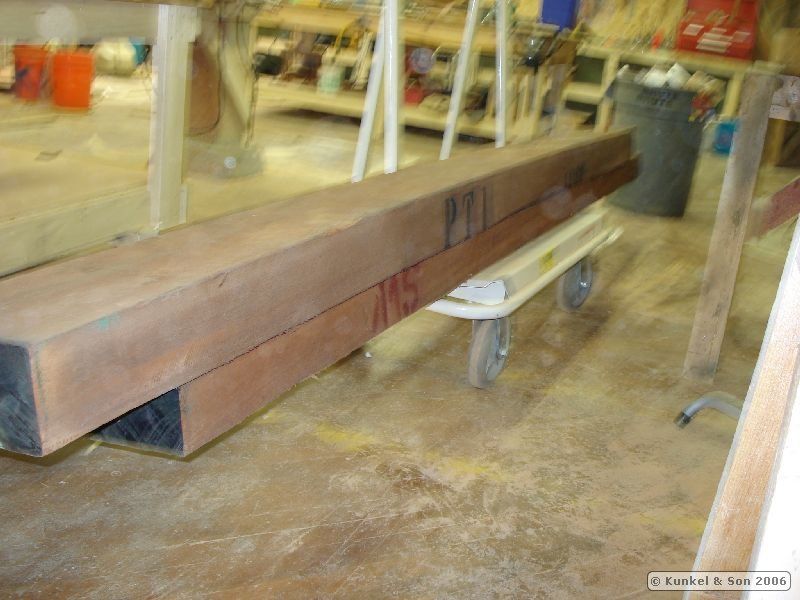Shop Drawing Submittals in Metric
When converting to 32mm construction, should all drawings be done in metric as well? April 18, 2004
Question
We are changing to metric in our shop as we convert to the 32mm way of building cabinets. Do most of you who build cabinets like this (in metric) do your submittals in metric as well, or do you submit them in standard inches and convert them for production purposes?
Also, when submitting shop drawings, our cabinet system does not always exactly equal the architect's stated size. For example, we use a 157 mm drawer front and a lot of the architectural prints ask for a 6" front. How exact do most architects expect you to be or are most of their prints to be used only as guidelines? How about cabinet heights?
Forum Responses
(CAD Forum)
From contributor P:
What are you going to do when the appliance spec sheet says you need a 48-1/4" opening for the subzero? What about the install crew? Are they in-house? Or are the cabinets going to be installed by the general contractor on site?
I know this, I wouldn't want to get shop drawings on site with metric measurements. That would make my life miserable. I have enough stuff to fight on the job site without fighting the measurement conversions as well.
Hope you live in Canada.
As far as the architect goes, a 6" drawer or 6-3/16" probably doesn't matter to him or her. I try to stay fairly close to his/her measurements. That's probably within tolerances.
From contributor D:
We do all of our submittals and production in metric. We have our dimension styles in Autocad to display both metric and imperial so there is no converting for the installers and other people who can’t read metric. In my opinion, if you're going to build a 32mm style box, you should use metric in the shop drawings and in production.
From contributor R:
For in-house production, metric rules! A millimeter is usually a small enough increment, so you can (almost) always be working in whole numbers (example - 13/16" divided by 3). For cutlisting, it simplifies the process and of course, drilling and boring. You'll be amazed at how easy it is to make the transition and ultimately, you'll probably need to speak both - imperial (for outside the shop) and metric (for in the shop). For our shop, many casual conversations would include both imperial and metric numbers (but again, that was only on a casual level).
If you're going to convert to using metric, one very important note, though: do your work (all calculations, shop drawings and cutlists) natively in metric and then (if and when needed), translate dimensions to imperial to communicate with builders and architects (or use dual dimensioning). This is especially important if you are using CNC equipment, because if you don't, you'll wind up with a lot of squirrelly numbers.
Also, if you use a CNC router or P2P, 13mm straight bits are commonly available, which if you use 1/2" backs, helps a lot.
From contributor C:
We draw and dimension in centimeter units and display them with alternate units in inches for submittals. When we plot the final production set for the shop, we turn off the alternate dimensions. (This is easily done if you are using AutoCAD). The shop is never to see inches on the drawing . We don’t have a “cabinet system” so to speak, so we would just draw a 6” front as 15.2cm. Don't know if you have run into this yet, but one thing we have found that the architects do want to see is standard architectural scale factors. With metric drawing there are other scale factors that can be really handy, such as 1 to 2.5, 1 to 5, 1 to 10, etc., but have gotten negative reactions when trying to use those.
From contributor R:
Hmm... good point. We probably wouldn't have switched to metric if we didn't have a "cabinet system." And one thing to note is that the need for scaling diminishes once there is a cabinet system (at least on the shop floor). Usually on the floor, fabricators need more accuracy that what scaling provides, so for us, setting viewport scales to imperial proportions works fine because it works better for the installers, GCs and architects.
From contributor A:
Our shop is 100% metric and has been for years (10+); so when we do our shop drawings it's drawn in metric and both English and standard dimensions are shown. The shop only gets metric drawings. As for the catalog cuts, convert them (25.4). For the installers we print an install copy of the cabinets in standard. It's not as hard as some people think. This weekend when I was home for Christmas, I was looking through some of my old stuff and found a report that I wrote in 10th grade titled "The Metric System: a Total Adoption" and the summary of the report is that if you completely commit to the metric system, there will be very little problem with getting others to accept and understand it.
